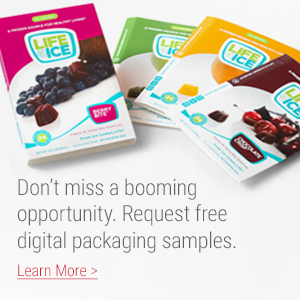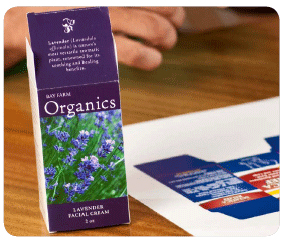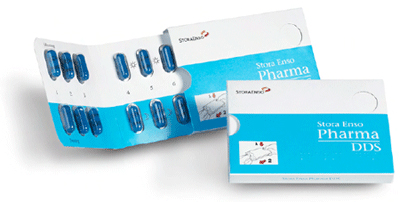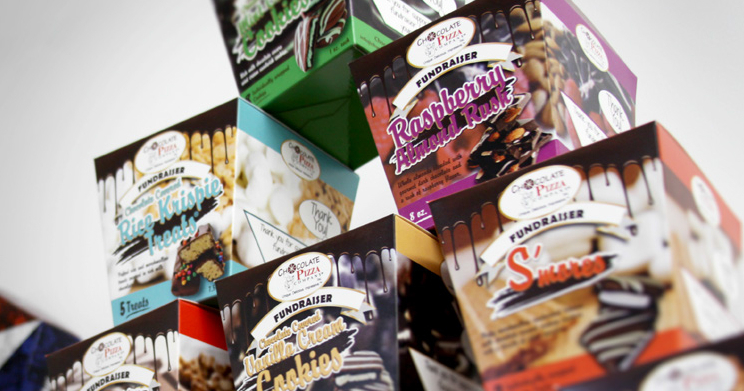Digitally printed packaging is an emerging application that is in an early adopter phase. First movers can still gain powerful advantages in a worldwide market that is expected to grow from $580 million in 2005 to $6 billion by 2015, according to Pira International.

Digital printing delivers a nice set of competitive, cost and environmental advantages when compared to traditional package printing technologies, and it’s surprisingly well suited to many packaging applications. Digital print production can use the just-in-time, print-on-demand approach; and with shortened setup requirements and automated makeready, short runs are typically less expensive on digital presses. And variable data printing can bring new value through personalization and customization for regional versioning, novelty items and for meeting pharmaceutical and healthcare needs for individual and custom-made packaging.
Environmental advantages
Packaging accounts for as much as one-third of solid waste in U.S. municipal landfills, according to the Environmental Protection Agency, making it a visible target of green activism. Today’s environmentally preferred packaging uses minimal materials, which are recycled or made in environmentally responsible ways, and which are biodegradable and easily recycled or reused so they aren’t dumped in landfills. Digitally printed packaging plays well with green packaging strategies to meet growing demand.
Among its environmentally sustainable qualities are these:
On-demand production—Orders can be placed in the precise quantities needed, eliminating or reducing warehousing and associated cost, energy requirements and waste from obsolescence.
Electronic job ordering and submission, paperless workflow, and soft proofing— These processes reduce paper usage and associated costs while boosting efficiency.
Green paper choices—Offer recycled paper or paper with chain-of-custody certification designating it has been produced in a supply chain that promotes responsible forestry practices from harvesting to packaging. Some customers are willing to pay extra for green paper and board.
Eliminate varnish—Varnish is required for offset printing and adds cost and, in the case of UV varnish, an environmental hazard, small amounts of ozone that need to be ventilated. Offset ink takes 24 hours to dry and harden, so it needs a coat of varnish for mechanical handling and to seal the surface of the inks, preventing bleeding and smear onto the back side of the next sheet in the stack. In contrast, digitally printed pieces have a dry and hard surface immediately, with low risk of scratching and color setoff, making varnish necessary only to achieve visual effects.
Non-toxic glues—These are available for most binding techniques, eliminating the need for ventilation of toxic fumes and waste management issues.
Distribute-then-print—Minimize environmental impact by distributing electronically to your print center or partner nearest the customer for printing and the fastest, least environmentally disruptive delivery.
As stated in a previous post related to sustainability, there are several applications that can deliver profit and growth opportunities for print providers, cost savings, improved business results for their customers, and environmental advantages as well. Packaging printed using digital press technology easily inherits the environmental advantages digital printing already brings to the table.
12 Comments
Comments are closed.



I can see packaging changing dramatically, can we really pull it through this way? It will be incredible to see, I can’t wait. Great article.
Thanks Paul! A large number of printers and brand owners we talk to are pretty excited about the opportunities around digital print and packaging.
· You can to print only the amount your customer needs, when they it.
· Sustainability is getting alot of attention in our business because digital printing has lower make ready waste, and there are definitely cost advantages of not having to dispose of outdated materials in the warehouse.
· The ability to respond quickly in a given marketplace and support regionally focused marketing programs.
· Producing short runs of materials in multiple languages can be done in a cost effective way.
This green approach is not only good for our environment, but it has the added benefit of offering you customers a solid competitive differentiator.
Sounds very promising, but a digital press is one part of the story, getting it finished is another part which for most of the “digital” print service providers is beyond reach financially, becuase there isn’t any die-cutting equipment to compliment digital presses, yes there is if you have one or two igen’s
Hi Abe! I find your statement to be a common concern for printers. To offer packaging as an additional service to your customers, you wouldn’t have to take it all on. Digital printers can partner with a packaging converter and vise-versa. Instead of having to puchase all the equipment for diecutting, folding, glueing, etc… you can partner with those who already have that equipment and expertise.
Agree that finishing is a problem for Digital Printers. I have produced quite a variety of digital packaging but need to now consider die cutting in-house. Can anyone recommend a suitable die cutter where dies can be made in-house.
Hi Bill! From a Xerox perspective, Esko Artwork and Kama are two Xerox partners that can help. Kama makes the die cutter that runs in-line as part of our Automated Packaging Solution. This is best for the higher quantities of folding cartons that iGen is meant for.
For lower quantities of one or more, Esko Artwork tables are great because the knives/blades cut the paper directly so there isn’t really a die that is made.
It all depends on how large a quantity you are looking to produce…
Thanks Lindsay it sounds like the Esko would be the one as at the moment we are looking at fairly short runs say about 200.
Thanks Bill
I think this will be an area of print and graphic design that will truly expand exponentially within the next few years as the demand for “green products” continue to grow.
There was a phenomenal “green” Graphic Design Team that really focused on eco friendly solutions. They have some cool ideas, check out their blog. Cheers.
I agree Mark… the design of the package will have a huge impact on maximizing the real estate used on the sheet so there is less waste, how well the packages can fit together for efficient transportation,… I checked out your links… very interesting!
This is good site. keep it up.
urdu shadi card printing
Packaging designs are change drastically and moving towards the green environment. Thanks for sharing 🙂
Printing Studio Malaysia
If you do article marketing, I thought this link woul be helpful.